Whenever I travel somewhere on a press trip I find that there is usually one thing that keeps showing up at every meal over the course of a few days. In Emilia-Romagna it was Lambrusco, and in Pantelleria it was insalata pantesca. In Rimini a few weeks ago every meal was served with a basket of piadine, which was fine with me. But I still remember the week I spent in Salerno where every single meal featured either limoncello or baba’ or – horrifyingly – a combination of the two.
My recent trip to Sardinia was no different. The organizers wanted to show up the best of what the region had to offer. And while I did get to try an amazing number of pasta dishes in a short time, almost every single meal ended with a seadas.
Seadas, if you don’t already know (and I did not) is a pastry made with a lard based dough. The pastry is stuffed with cheese, fried and then covered in honey. I know it sounds weird, and that the mixture of ingredients, textures and flavors is probably something you’ve never had. But trust me when I say that even though every single meal ended with a seadas, I never got tired of them. In fact, two weeks later, I am still craving them.
Luckily I learned how to make them from the comfort of my own home.
During one of the cooking lessons put on by the Porto Cervo Food Festival. chef Fabio Zago whipped up a batch which I managed to video.
A few things to note if you are going to attempt this at home. Lard is a good thing here. It makes the pastry extra light and flaky, and complements the savory aspect of this dessert. The cheese that they use is a fresh sheep’s milk cheese, pecorino. Not sharp pecorino romano, or nutty Tuscan pecorino, but barely aged Sardinian sheep’s milk cheese.
But the most important part (at least in my opinion) is the honey. The honey used to drizzle atop this pastry is made from corbezzolo, which in a kind of wild plant that grows in Sardinia. It’s a very special type of honey because it has a decidedly bitter flavor. When I tasted it on its own the bitterness was over powering mostly, I think, because I wasn’t prepared for it. But paired with cheese, or better yet fried, cheese-filled pastries, it’s the perfect amount of bittersweet.
Seadas are usually about double the size of the ones you see here. These were meant to be served not on a plate, but standing up at a buffet. So chef Fabio mixed in some honey with the grated cheese so that he wouldn’t have to make a mess and drizzle some on top afterwards, which would lead to sticky fingers. But of course, who can resist the call of honey drizzled on top of freshly fried dough? So we doubled up the honey and had it inside as well as on top. No one seemed to be complaining about sticky fingers.
Another good thing about making them slightly smaller? You can eat more of them.
seadas {sardinian cheese + honey pastry}
Prep
Cook
Total
Yield 20
Ingredients
- 100 grams / 1 cup all purpose flour (00 if you can find it)
- 100 grams / 1 cup semola di grano duro flour
- 40 grams/ 1/4 cup of lard
- 10 grams / 2 tsp of sugar
- 1/2 tsp salt
- 1 cup cold water
- 200 grams / 1 cup grated fresh sheep’s milk cheese
- Honey: corbezzolo honey if possible.
- For frying: peanut oil or lard
Instructions
- Mix the two flours together with the salt and sugar. Add the lard and mix with your hands until mixed in. It should look like small peas. Don’t over mix.
- Add cold water, up to a cup, just until the dough comes together.
- Wrap it in saran wrap and place in refridgerator for about an hour.
- Grate the cheese and mix it with about 2 tablespoons of honey if desired.
- Roll out the dough until it is about 1/4 inch thick (do this in batches, keeping the rest of the dough cold). Cut into small disks using a 2 1/2 inch cutter.
- Place about a teaspoon of cheese in the center of half the disks. Wet the edges with a bit of water, then place another disk on top, pressing down the edges with your fingers. Using a fork to press the edges, making sure not to pierce the seadas with the tines.
- To fry: bring a pan with at least 3 inches of peanut oil or lard to high heat. When hot (you can test with a bit of dough) slip in the seadas. Fry until golden on the outside, turning at least once.
- Remove with a slotted spoon and blot on paper towels. You can eat as is (since there is honey inside already) but even better to place it on a plate and drizzle with honey.
Notes
If you are making these for dessert, prepare them at the very last minute, and eat while piping hot. Otherwise the cheese becomes hard.
This recipe comes from chef Fabio Zago a teacher from La Scuola de La Cucina Italiana.
I attend the Porto Cervo Food Festival as the guest of Starwood Hotel and Resorts, who manage the Cervo Hotel where I stayed.
I can’t stress enough what a difference the corbezzolo honey makes. I’ve found a few sources for it:
Zingermans
Gustiamo
Gourmet Sardinia
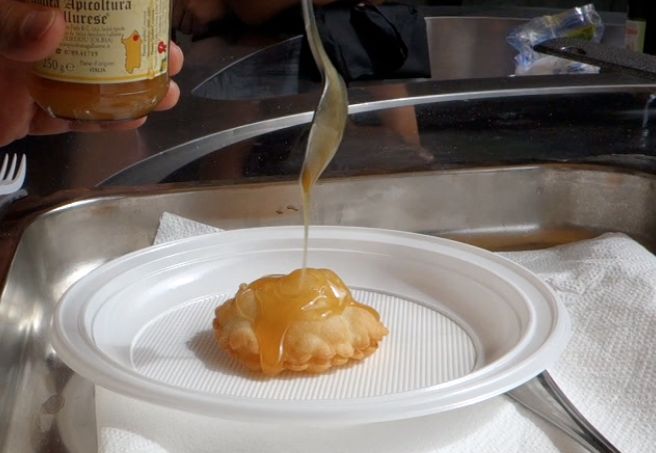
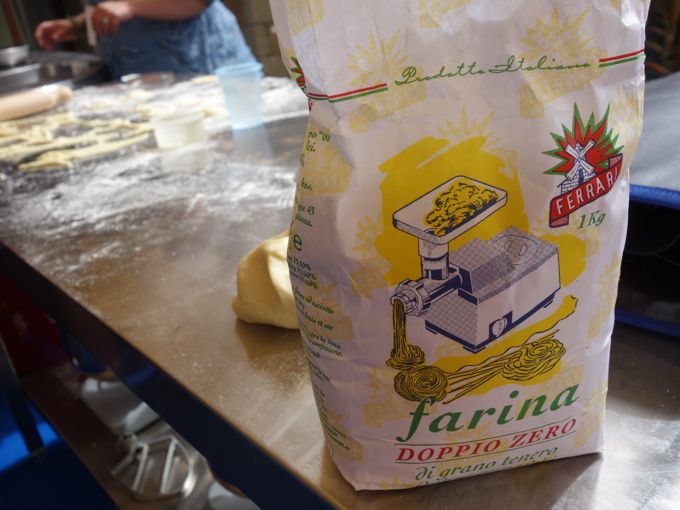
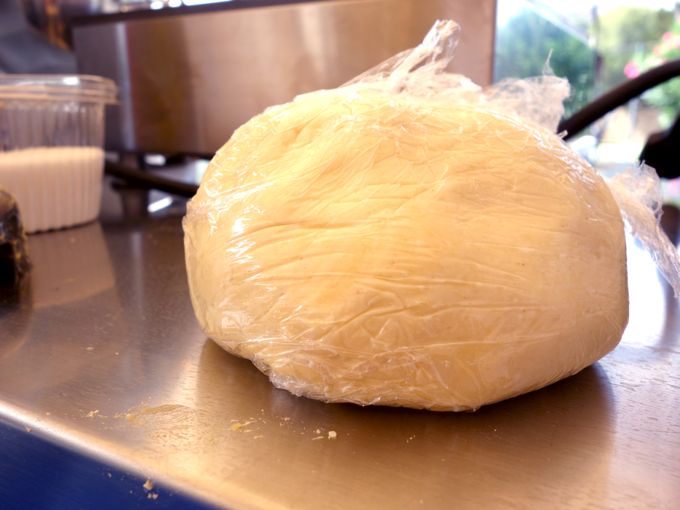
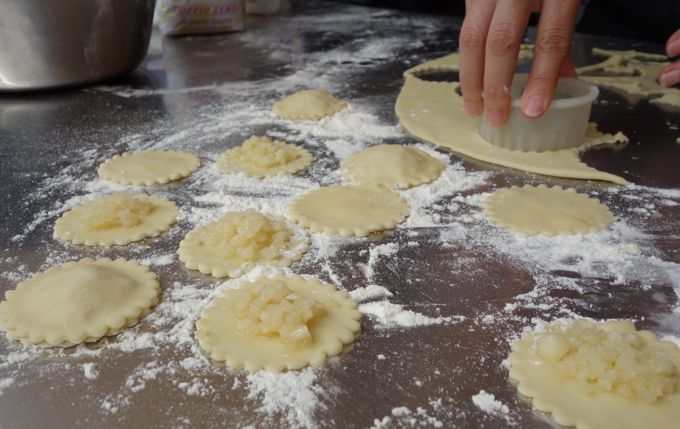
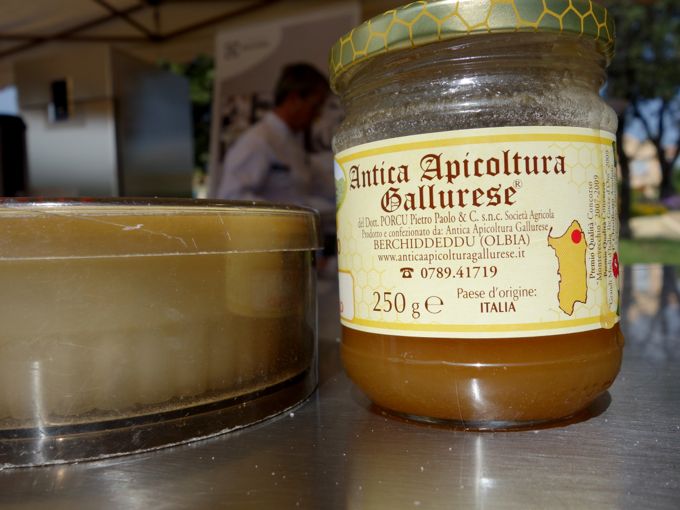
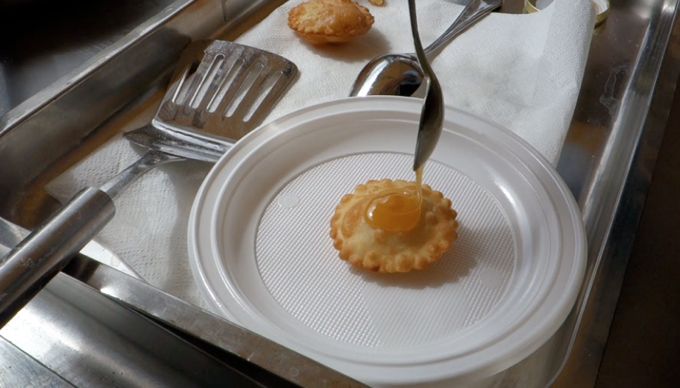
Those look delicious! Loved the cute little video. Well done!
Yum, yum! I have had the opportunity to taste that honey in Chianti…yes it is bitter! But…I want those pastries…how the heck can you go wrong with fried dough…getting the cheese…well that’s another matter. You can probably get it in London!
Don’t worry too much about getting Sardinian cheese. As long as it’s a good quality sheep or cow’s milk cheese, and not too aged, I think you should be ok.
“…or – horrifyingly – a combination of the two.” Funny! These sound wonderful! Placing order for Corbezzolo now. Re: the Seadas – I’ve never worked with Lard; must it be kept and added chilled, like butter, when using it for baking?
Yes, just think of it as butter. But coming from pork. 🙂
This is a cousin to casateddi, which my American-born Sicilian father learned from his mother. Same dough, but the filling is essentially cannoli cream, and the fried pastries are sprinkled with cinnamon sugar.
I think every place must have it’s own version of fried stuffed dough. Sicily is ricotta, Sardinia pecorino….and in the USA I guess they would stuff it with a Mars bar and put it on a stick.
I think they already do that! 🙂